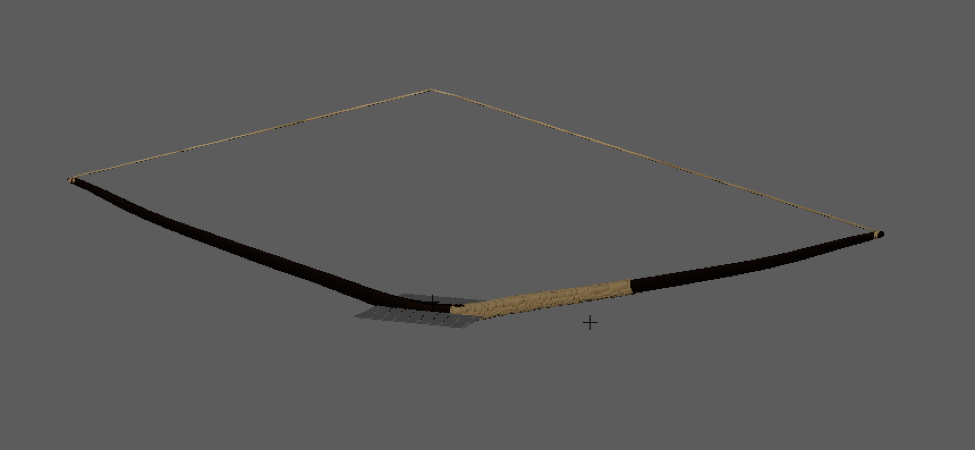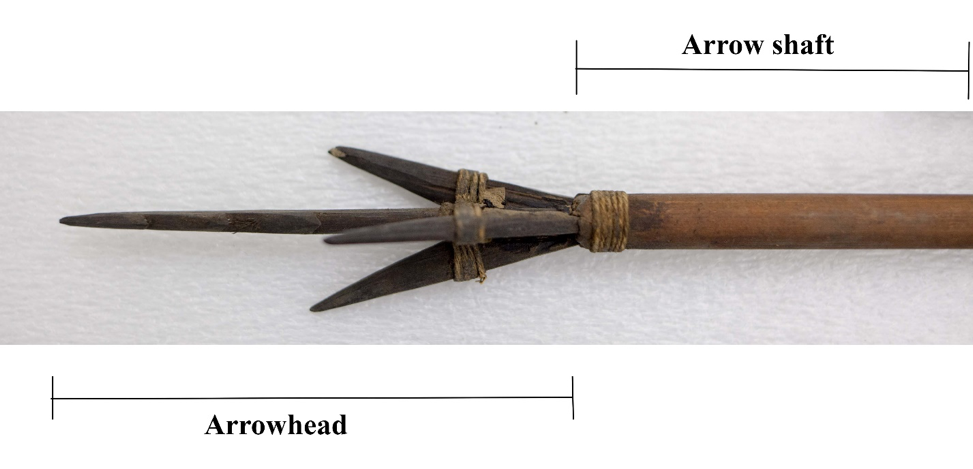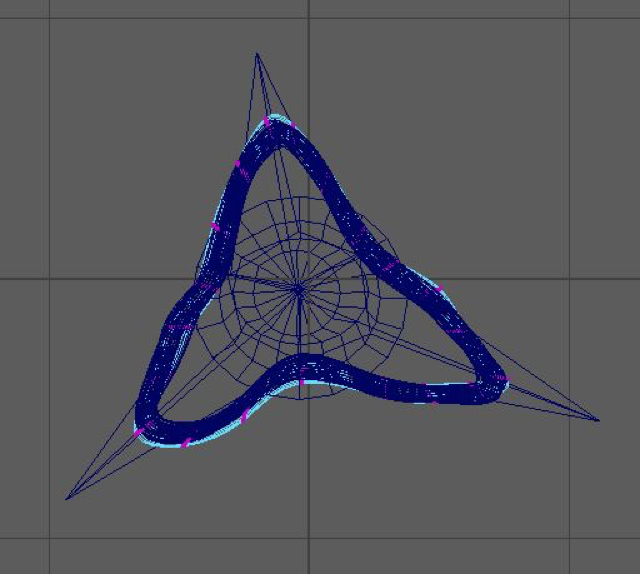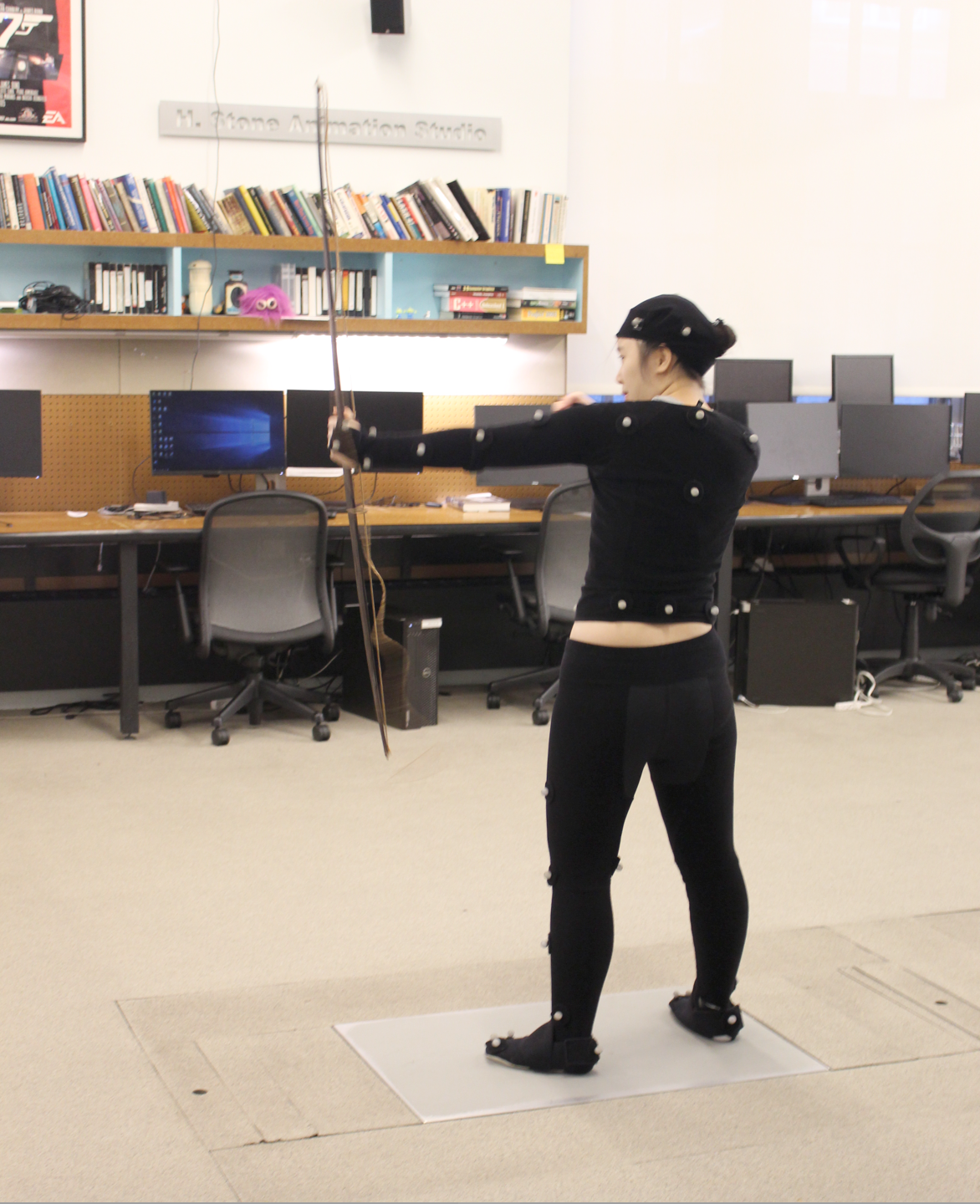BOWS AND ARROWS OF THE BOLIVIAN AMAZON
Abstract
Much of what the public learns about history and archaeology comes from the media. While some representations may be accurate, the majority of portrayals focus on representing academic topics in a way that is entertaining for the audience. Popular media tends to generalize Native peoples as hunting with primitive bows and arrows, but these hunting tools are actually sophisticated. Bows and arrows also held a lot of cultural significance, so much that they were used in burials and coming of age rituals. This project focuses on the use of digital media, modeling, and animation to change the public’s perspective on hunting by native peoples.
3D Models
Figures

Figure 1: The bow from Penn Museum (SA693). It is from the Cayapo of Brazil.

Figure 2: Scaling the reference image of the bow to the grid in Maya

Figure 3: The bowstring seems to be tied on both ends with a double loop, where the string loops around the bow twice and the loose end is pulled through the two loops.

Figure 4: Ebony wood texture for the bow stave. --- Source: CadNav - n.d. Macassar Ebony wood texture. Electronic graphic, CadNav, http://www.cadnav.com/textures/5482.html, accessed December 7th, 2017

Figure 5: Smooth wood bump map for adding realism to the bow stave. --- Source: FilterForge - n.d. Cottage Wood Bump Map. Electronic graphic, Filter Forge, https://www.filterforge.com/filters/5936-bump.html, accessed December 7th, 2017

Figure 6: String texture for the grip and bowstring. --- Source: Bgfons.com - n.d. Rope texture. Electronic graphic, bfons.com, http://bgfons.com/download/2089, accessed December 7th, 2017

Figure 7: Rope bump map for adding realism to the grip and bowstring. --- Source: JDA - 2002 Rope bump map. Electronic graphic, blenderartists.com, https://blenderartists.org/forum/showthread.php?222061-Texture-Problem-Normal-Map-not-work-for-me, accessed December 7th, 2017

Figure 8: Bow, grip and bowstring with textures.

Figure 9: Detail of bowstring tied to bow end.

Figure 10: Detail of bowstring tied to bow end.

Figure 11: Reference bow from the Penn Museum (a) and final model of bow in Maya (b).

Figure 12: Bow with rigged skeleton.

Figure 13: Bow deformed by the joints.

Figure 14: Painting the skin weights.

Figure 15: Bow bending smoothly after painting skin weights.

Figure 16: Arrows heads (29-190-12 to 19) and bow (29-190-11) from the Penn Museum. They are from the Andean culture group in the Peruvian Highlands.

Figure 17: Labeled arrowhead and arrow shaft of an arrow with a serrated arrowhead.

Figure 18: Detail of serrated rod arrowhead

Figure 19: Scaling the reference image of the arrowhead to the grid in Maya

Figure 20: Finished model of serrated rod arrowhead with sharp edges.

Figure 21: String was tied around the tip of the arrow shafts so the arrowheads will not fall out.

Figure 22: Finished arrowhead and shaft.

Figure 23: Reference arrow from the Penn Museum (a) and final model of the serrated arrowhead and arrow shaft in Maya (b).

Figure 24: The 3 prong arrow from the Penn Museum (29-190-20) from the Andean culture group of the Peruvian Highlands.

Figure 25: Labeled arrowhead and arrow shaft of an arrow with a 3-prong arrowhead.

Figure 26: Scaling the reference image of the arrowhead to the grid in May8

Figure 27: Attached prongs to central arrow foreshaft

Figure 28: Added strings around the prongs to secure the arrowhead

Figure 29: Side –x view of the arrowhead.

Figure 30: Wrapped string around 3 prong arrowhead.

Figure 31: Finished model of 3 prong arrowhead.

Figure 32: Reference arrow from the Penn Museum (a) and final model of the serrated arrowhead in Maya (b).

Figure 33:Wearing a motion capture suit with reflective markers (Photograph courtesy of Dr. Clark Erickson).

Figure 34: Creating motion of shooting an arrow horizontally (Photograph courtesy of Dr. Clark Erickson).